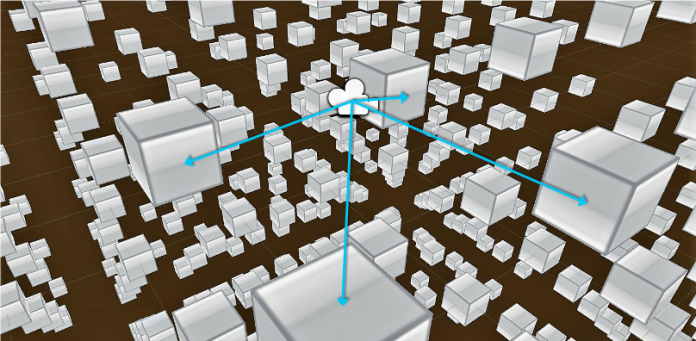Microsoft, well-known for its development of the augmented reality (AR) head-mounted display (HMD), the HoloLens, has identified and outlined in its latest virtual reality (VR) endeavour the cons to each of the existing HMD and in turn has presented its own solution to conquer these faulted technologies with FlashBack, its own “unorthodox” answer to mobile VR but with the power of tethered VR HMDs.
It has been acknowledged that mobile VR will be and has been the fastest to evolve as a VR technology, and Microsoft has shown its initiative to get mobile VR, such as the Samsung Gear VR and Google Cardboard, up to the same standard as PC and console VR, such as the Oculus Rift, HTC Vive, or PlayStation VR. The main concept of FlashBack is rather than to render images in real-time, which can take up a lot of power, but to pre-render and store all possible images that the viewer can potentially come across, resulting in a more powerful, smooth, and energy-efficient mobile VR HMD.
Microsoft doesn’t show preference of what generates the stored data – or cache – as long as it can be downloaded to the HMD before the program is to be used. This seems like a relatively simple concept, but there is more to the concept of the design as VR is not like a movie, but instead a non-linear and interactive experience. With this in mind, the cache will not only hold pre-rendered images, but will also intelligently predict and approximate what it has not already pre-rendered, including moving 3D objects such as people or cars.
Throughout the paper there is a lot of in-depth technical explanation, but the way in which the cache is created and ordered is that there’s a distinct difference between non-moving and moving objects – static and dynamic. Each entry is a high resolution ‘megaframe’, which is a collection of many different objects in its 3D spacing, ready to be understood and adapted to create a smooth real time-like pre-rendering process and experience.
Moving objects are complete with freeform motion paths and animations, meaning they will need a much more complicated cache structure in order for them to be flexible but still able to be shaped to a pre-rendered experience. Dynamic objects will only exist in areas where the user can see them, and its position is not based off of where the user is physically standing, but rather where the player is in relation to the virtual object, therefore making it easier for the rendering process.
All of this means that there will be lowered latency – less than 25ms which is half of what has been achieved – and a higher framerate of at least 60 fps, as well as ensuring a long battery life. Microsoft wishes to produce all of this, and to add the cherry on top, it aims to do this at a more affordable rate, which could seem too good to be true for some, as this technology – according to Microsoft – would solve many of the issues at hand with the gap between tethered and untethered HMDs, along with the expensive nature of the technology.
For the latest in the world of VR, check back with VRFocus.















